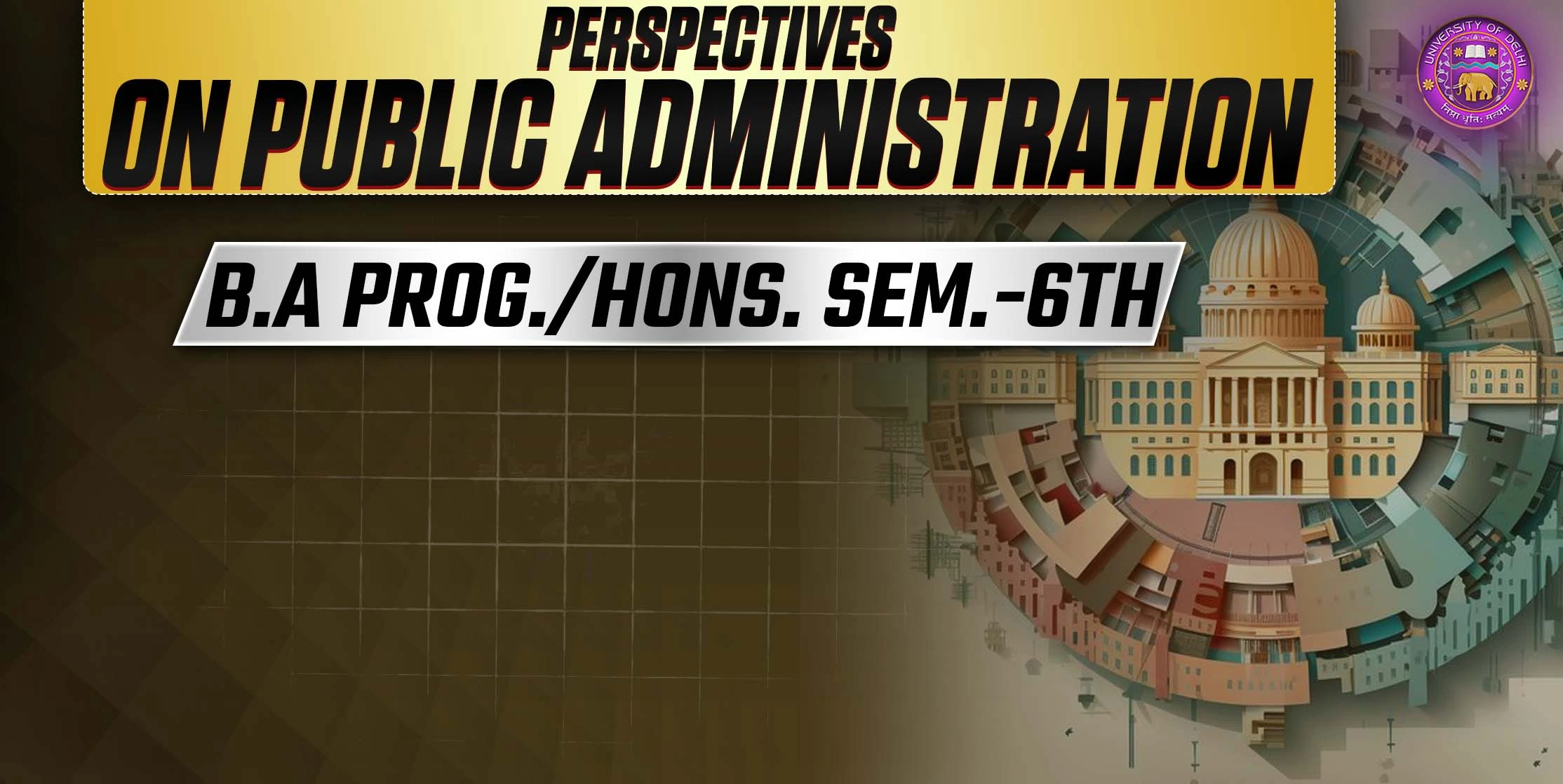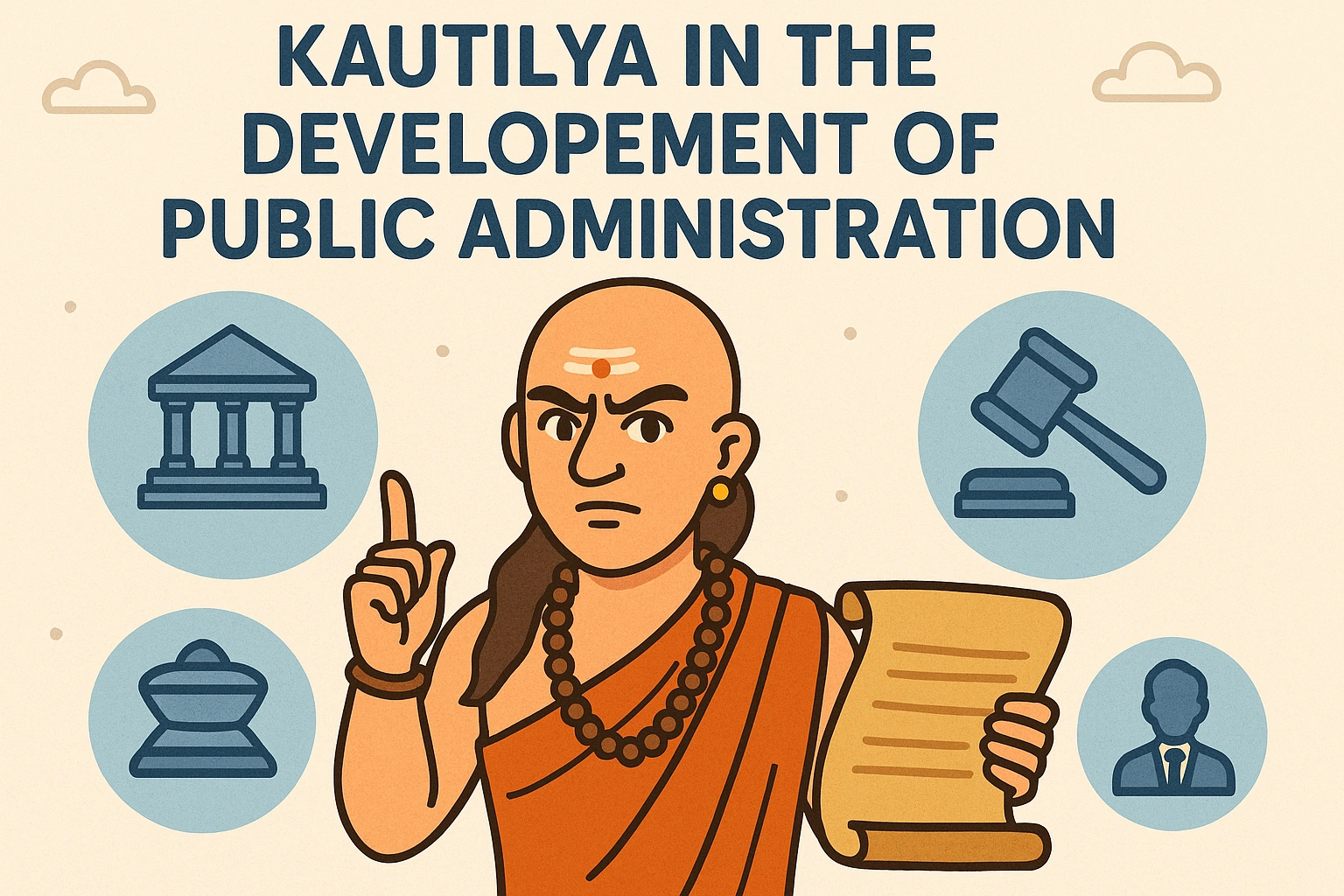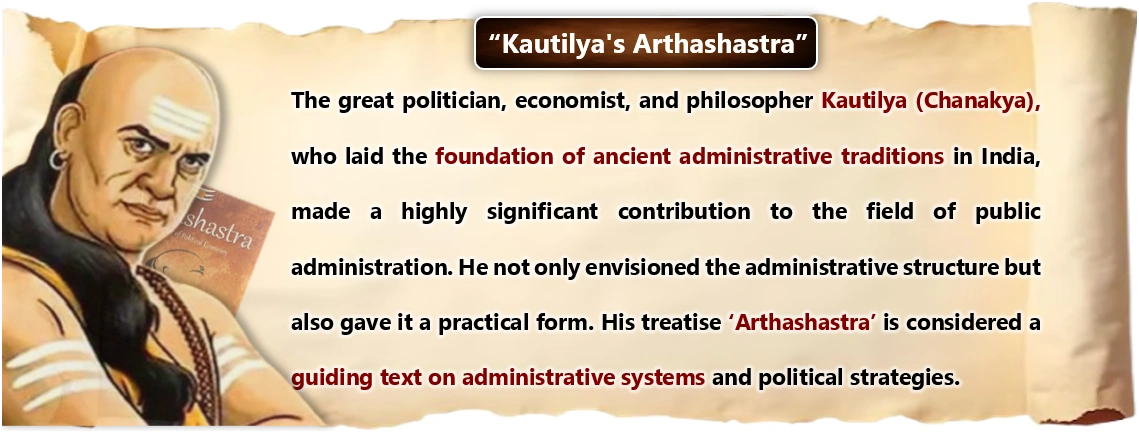
Get in Touch
We will get back to you within 24 hours.
Welcome to MVS Blog

Or
Briefly examine the contribution of Kautilya in the development of Public Administration.
Answer – Introduction

The history of public administration is very ancient. It began with civilizations like Greece, Egypt, and Rome, where systems were developed to maintain law, order, and justice for the people. Later, the Roman Catholic Church and the Byzantine Empire adopted these practices, and the royal families of Europe laid the foundation of modern administrative institutions. As a result, the structure of today's public administration evolved, making it the backbone of governance even today.

Meaning of Public Administration :
The English translation of "लोक प्रशासन" is "Public Administration," which is derived from two Latin words. The first word is 'Public' (Latin: publicus), meaning 'people' or 'citizens'. The second word is 'Administration' (Latin: ad+ministrare), which means 'to manage' or 'to serve'.
Thus, public administration means - serving the people, working for their welfare, and running the administration in the interest of the public. It is an administration by the people and for the people. In simple terms, “Public Administration is the form of government or administration that works considering the needs and interests of the society.”
Definitions of Public Administration by Different Thinkers :
According to Woodrow Wilson, "Public administration is the detailed and systematic execution of law. Every act of enforcing the law is an administrative act."
In the words of L.D. White, "Public administration includes all those operations whose purpose is the implementation of public policies."
According to Herbert Simon, "In common usage, public administration means the study of the activities of the executive branches of central, provincial, and local governments."

Contribution of Kautilya's ideas in the development of public administration :
1. Concept of State and Administrative Structure : Kautilya, through the ‘Saptanga Theory’, mentioned seven main elements of the state—King, Minister, Territory, Fort, Treasury, Army, and Ally. This theory explains various aspects of administration and is still considered relevant in the study of administrative structures.
2. Role of Council of Ministers and Officials : Kautilya considered the council of ministers as the main foundation of state governance. He gave a detailed account of the selection, duties, qualifications, and accountability of ministers, secretaries, and other officials. He believed that a strong administrative system is the foundation of a successful state.
3. Treasury and Financial Administration : Kautilya clearly defined revenue collection, tax system, expenditure monitoring, and the role of the treasurer. He emphasized economic discipline and transparency, which remain inspiring for modern public administration as well.
4. Justice and law & order : The Arthashastra contains a detailed description of the judicial system and law & order. Kautilya clearly defined the appointment of judicial officers, categories of crimes, and the system of punishments. His aim was to establish just a fair rule.
5. Public welfare and public interest : Kautilya did not consider public administration merely as a tool of governance, but connected it with public welfare. He regarded irrigation, road construction, agricultural development, security, education, and employment as the primary responsibilities of the state.
6. Intelligence System and Administrative Surveillance : Kautilya considered the intelligence system to be extremely important to maintain transparency in the administration. He gave a strategy to use spies to monitor officials, so that corruption can be controlled.
7. Code of Ethics and Conduct : Kautilya laid down ethical conduct for administrative officials. According to him, an ideal ruler or administrator is one who rises above personal interest and works solely for public welfare.
Conclusion :
Kautilya’s ideas are a precursor to modern administrative theories. His thinking aligns not only with the concepts of a welfare state, transparency, and accountability, but also with the principles of professional administration. He viewed administration not merely as a tool of power, but as a means of public service. The teachings of Arthashastra continue to serve as guiding principles for today’s public administration, policy-making, and good governance.
0 Response